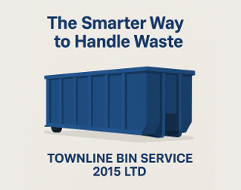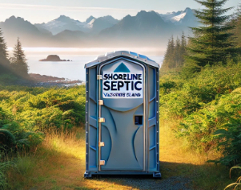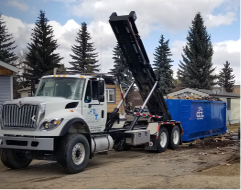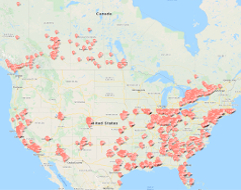Seasonality of Municipal Waste Generation
At Dumpster Rentals Depot we are very environmentally concerned. We continually take an effort to communicate with the local and global Environment Protection agencies and individual scientists to learn new effective methods of proper disposal and recycling waste materials.
We encourage every Disposal Bin Rentals company who is a member of Dumpster Rentals Depot to contribute to this initiative and support this ‘Pollution Free Waste Disposal’ move.
Below we offer an interesting research conducted by a Department of Environmental Engineering of Kaunas University of Technology on the "Seasonality of Municipal Waste Generation":
------------------------------------------------------------------------ ------------------------------------
Department of Environmental Engineering, Faculty of Chemical Technology, Kaunas University of Technology
“Seasonality of Municipal Waste Generation and Composition and Corresponding Fluctuations of Various Environmental Indicators for Waste Management and Treatment Facilities”
Acronym: SWC-Env-Ind
Kaunas, Lithuania, August, 2009
1. Problems discussed and their relevance
Restructuring of environmental protection systems and implementing best available environmental technologies is very important and constantly shifting task for various countries with different level of economical development. Waste management, especially municipal solid waste management, is one of the target fields for this transfer.
However, the experience obtained in the initial steps of this process revealed that the selection and implementation of certain waste treatment and disposal technologies is rather complicated, since the choice is affected by numerous factors. The mentioned development level as well as climate conditions are the most important general factors influencing the strategies for municipal waste management. The interaction of the above described factors form a single important factor – the season fluctuations of municipal solid waste composition. This factor in turn affects corresponding economical, energy-related, environmental and even social-psychological indicators of existing or planned waste management system and facilities.
To these indicators belong:
a) the emissions of various environmentally hazardous compounds from landfills, facilities for mechanical-biological treatment, incineration plants etc.,
b) the content of similar hazardous compounds, in example heavy metals and dioxins, in bottom ashes, fly ashes, landfilled low calorific fraction, compost etc. Unfortunately, waste management strategies are usually formed on the presumption that municipal waste composition during the course of a year remains theoretically constant. Practice shows that this presumption introduces a lot of challenges in the subsequent operation and environmental impacts of waste management system components.
The available data on the variation of municipal solid waste (MSW) composition is mostly presented as year by year variation. Some studies include seasonal as well as monthly variation. Table below summarizes data of some publications from European and nearby regions.
------------------------------------
Doneck (Ukraine) [Sustainable, 2007]
Paper and cardboard. Municipal Solid Waste fraction:
Spring - 5.5%
Summer - 5.6%
Autumn - 6.2%
Winter - 6.4 %
Glass. Municipal Solid Waste fraction:
Spring - 7.4%
Summer - 9.2%
Autumn - 5.4%
Winter - 6.4%
Metals. Municipal Solid Waste fraction:
Spring - 2.7%
Summer - 3.2%
Autumn - 2.0%
Winter - 2.6%
Plastics and Composites. Municipal Solid Waste fraction:
Spring - 7.4%
Summer - 8.2%
Autumn - 6.4%
Winter - 9.7%
Biodegradable. Municipal Solid Waste fraction:
Spring - 33.3%
Summer - 38.6%
Autumn - 47.3%
Winter - 36.6%
Other burnable. Municipal Solid Waste fraction:
Spring - 25.3%
Summer - 20.4%
Autumn - 19.0%
Winter - 22.2%
Other unburnable. Municipal Solid Waste fraction:
Spring - 18.4%
Summer - 14.8%
Autumn - 13.7%
Winter - 16.1%
------------------------------------
Tallinn (Estonia) [MSW Sorting, 2008]
Paper and cardboard. Municipal Solid Waste fraction:
Autumn - 25.5%
Winter - 18.2%
Glass. Municipal Solid Waste fraction:
Autumn - 5.7%
Winter - 12.5%
Metals. Municipal Solid Waste fraction:
Autumn - 1.8%
Winter - 2.1%
Plastics and composites. Municipal Solid Waste fraction:
Autumn - 14.2%
Winter - 18.1%
Biodegradable. Municipal Solid Waste fraction:
Autumn - 63.9%
Winter - 54.6%
------------------------------------
Cyprus [Koufodimos, 2002]
Paper and cardboard. Municipal Solid Waste fraction:
Spring - 28.0%
Summer - 21.0%
Autumn - 27.0%
Winter - 19.0%
Glass. Municipal Solid Waste fraction:
Spring - 2.5%
Summer - 2.5%
Autumn - 2.5%
Winter - 3.0%
Metals. Municipal Solid Waste fraction:
Spring - 4.0%
Summer - 5.0%
Autumn - 4.5%
Winter - 4.5%
Plastics and Composites. Municipal Solid Waste fraction:
Spring - 12.5%
Summer - 13.0%
Autumn - 17.0%
Winter - 12.5%
Biodegradable. Municipal Solid Waste fraction:
Spring - 42.0%
Summer - 45.0%
Autumn - 36.5%
Winter - 33.0%
------------------------------------
UK [Burnley, 2007]
Paper and cardboard. Municipal Solid Waste fraction:
Summer - 23.8%
Autumn - 24.0%
Glass. Municipal Solid Waste fraction:
Summer - 6.4%
Autumn - 6.4%
Metals. Municipal Solid Waste fraction:
Summer - 3.7%
Autumn - 3.7%
Plastics and Composites. Municipal Solid Waste fraction:
Summer - 10.2%
Autumn - 9.4%
Biodegradable. Municipal Solid Waste fraction:
Summer - 35.9%
Autumn - 38.2%
------------------------------------
Bangladesh [Tariq Bin, 2007]
Paper and cardboard. Municipal Solid Waste fraction:
Summer - 7.0%
Autumn - 10.0%
Plastics and Composites. Municipal Solid Waste fraction:
Summer - 2.0%
Autumn - 6.0%
Biodegradable. Municipal Solid Waste fraction:
Summer - 66.0%
Autumn - 68.0%
------------------------------------
It is evident that seasonal variation in MSW composition greatly depends on the seasonal climate, namely, the duration of warm and cold periods in selected regions.
In Europe, there were very few attempts to characterize seasonal and monthly variations of MSW composition that would involve countries from different regions. The FP5 project “The Use of Life Cycle Assessment Tools for the Development of Integrated Waste Management Strategies for Cities and Regions with Rapid Growing Economies” aimed at developing a model for MSW forecasting. In the course of the project, the MSW composition has been determined in 10 countries around the Europe. However, these were single-time measurements and did not represent seasonal variations.
In this perspective, a project that targets comparison of seasonal MSW composition in countries of various levels of economical development is very timely and urgent. The new EU member states as well as surrounding countries are on the way of selecting optimal waste management systems. The proposed campaign will answer many important questions on MSW compositions and best approaches for its management. Based on these results, a methodological and integrated approach will be suggested for the developing countries for selecting optimal MSW management systems. These investigation data had been published on the next sources:
- Sustainable consumption and production in South East Europe and Eastern Europe, Caucasus and Central Asia - Joint UNEP-EEA report on the opportunities and lessons learned. EEA Report No 3/2007, 2007. http://reports.eea.europa.eu/eea_report_2007_3/en
- MSW Sorting Study 2007-2008, Estonian Institute of Sustainable Development, Tallinn, 2008.
- Koufodimos, G., Samaras, Z. Waste management options in southern Europe using field and experimental data. Waste Mangement 22 (2002) p.47-59, 2002.
- Burnley, S.J., Ellis, J.C., Flowerdew, R., Poll, A.J., Prosser, H. Assessing the composition of municipal solid waste in Wales. Resources, Conservation and Recycling 49 (2007) 264-283, 2007.
- Tariq Bin, Y., Mostafizur R. Monitoring quantity and characteristics of municipal solid waste in Dhaka City. Environ. Monit Assess (2007) 135:3-11, 2007.
2. Objectives and tasks
Project objectives:
- to determine factors influencing seasonal generation and composition of municipal solid waste, with respect to corresponding economical, energy-related, environmental and social indicators in countries with significant differences in economical and climatic conditions, as well as existing waste management system and facilities;
- to prove the suitability of existing prognostic and assessment models for seasonal prognosis of municipal waste flow and content, also above mentioned indicators for waste management system and facilities;
- to develop a methodology for the assessment of municipal waste management system or its separate components with respect to seasonal influences.
Main tasks:
1. Selection of one or more waste management regions in every project partner country;
2. Identification of main natural-geographical and social-economical indicators and character of waste management system in the selected regions;
3. Agreement with one or several waste management and treatment companies and/or institutions in the selected region;
4. Data collection and overview for previous situation (the period could be chosen by own discretion) in the selected regions (in the default case searching of corresponding data for similar regions on the same or other country):
collection of previous seasonal data for waste like:
- municipal waste generation (mixed municipal solid waste and separate collected fractions);
- waste content for: mixed waste, separate collected fractions, high calorific fraction (HCF) and low calorific fraction (LCF) after MBT;
- air pollutants emissions from incineration plants, facilities for mechanical-biological treatment (MBT), aerobic and anaerobic digestion, landfill gas procuring, etc.;
- generation of solid residues in waste treatment facilities (bottom ashes, filter ashes, high calorific fraction, low calorific fraction, compost, etc);
- content of heavy metals and hazardous organic compounds in solid residues;
- generation of leachate in landfills and waster-water in treatment facilities;
- content of heavy metals and hazardous organic compounds in leachate and waster-water;
collection of previous seasonal data for meteorological conditions like:
- air temperature;
- air relative humidity;
- rainfall (precipitation);
collection of previous seasonal data for social-economical conditions like:
- population number in the region;GDP in the region;
- employment in the region;
- tourist flow in the region;
- commodities and products consumption in the region;
5. Monthly monitoring for (the previous obtained data could be used):
- municipal waste generation (mixed municipal solid waste and separate collected fractions);
- air pollutants emissions from incineration plants, facilities for mechanical-biological treatment (MBT), aerobic and anaerobic digestion, landfill gas procuring, etc.;
- generation of solid residues in waste treatment facilities (bottom ashes, filter ashes, high calorific fraction, low calorific fraction, compost, etc);
- use of materials in waste treatment facilities (quicklime, ammonium, active carbon, etc.);
- energy consumption and/or generation in waste treatment facilities (electricity, heat);
- generation and content of leachate, waster-water and sludge in waste treatment facilities;
- generation and content of gas in landfill-gas procuring system;
- meteorological conditions like air temperature, air relative humidity and rainfall (precipitation);
- social-economical conditions in the region like population number, GDP, employment, tourist flow commodities and products consumption.
6. Monthly (or seasonal) analyse for:
- waste content for: mixed waste, separate collected fractions, high calorific fraction (HCF) and low calorific fraction (LCF) after MBT;
- waste fractions humidity, sulphur, chlorine and ash-content;
- heavy metals content in waste fractions and waste treatment residues (not necessary for all project partners; the current and previous research results could be successfully used for all);
- content of hazardous organic compounds in solid residues (not necessary for all project partners; the current and previous research results could be successfully used for all).
7. Determination of seasonal dependencies of indicators in the existing waste management and treatment facilities (according to results of 5 and 6 points) like:
- municipal waste generation (common flow);
- generation of main municipal waste fractions like package materials, kitchen waste and garden waste;
- municipal waste content;
- generation of waste disposal and treatment residues (leachate, ashes, compost, etc);
- energetic indicators (calorific value, energetic potential, etc.);
- environmental indicators including pollutants concentrations in emissions and treatment residues;
- content of hazardous organic compounds in solid residues (not necessary for all project partners; the current and previous research results could be successfully used for all).
8.
Theoretical determination (calculation) of
seasonal dependencies of planed municipal waste management system indicators
(environmental, economical and social) according to results of for
planed Determination of seasonal dependences for existing waste management
and treatment facilities (according to results of 5-7 points);
9. Comparison of seasonal dependencies of waste generation and content and waste management system indicators with seasonal dependencies of meteorological and some social-economic conditions according to research results mentioned above;
10. Determination of seasonal functions with variable and permanent factors for waste generation and content and waste management system indicators;
11. Simulation of seasonal dependencies by tools like LCA-IWA, ARIMA (Auto Regressive Integrated Moving Average Method) and other; comparison simulation results with research results.
12. Elaboration of suitable methodology for seasonal simulation of municipal waste management system indicators.
- Published: 2010-10-11T09:36:08-07:00
- Author: Laura Schmidt, Dumpster Rentals Customer Supp






